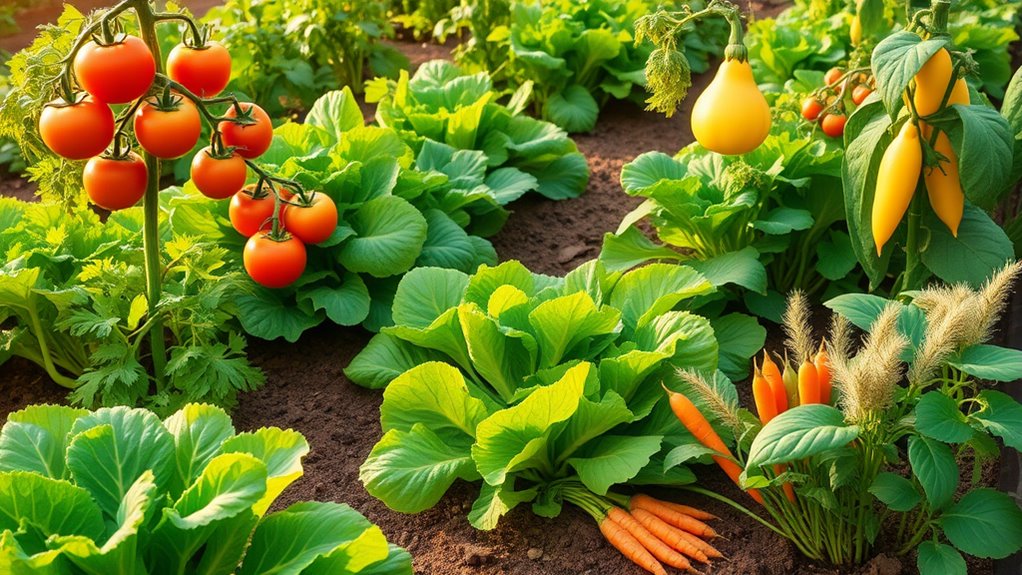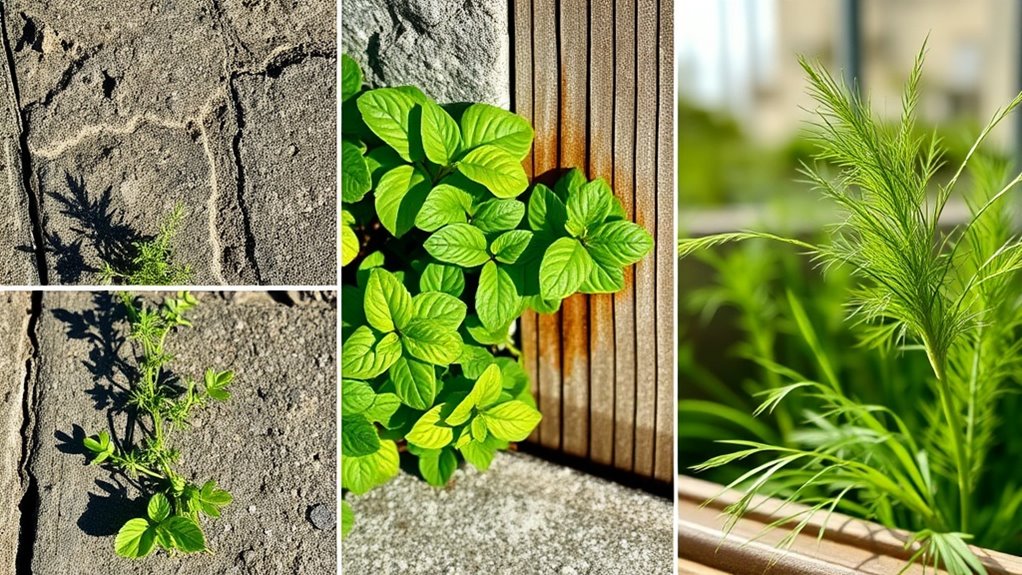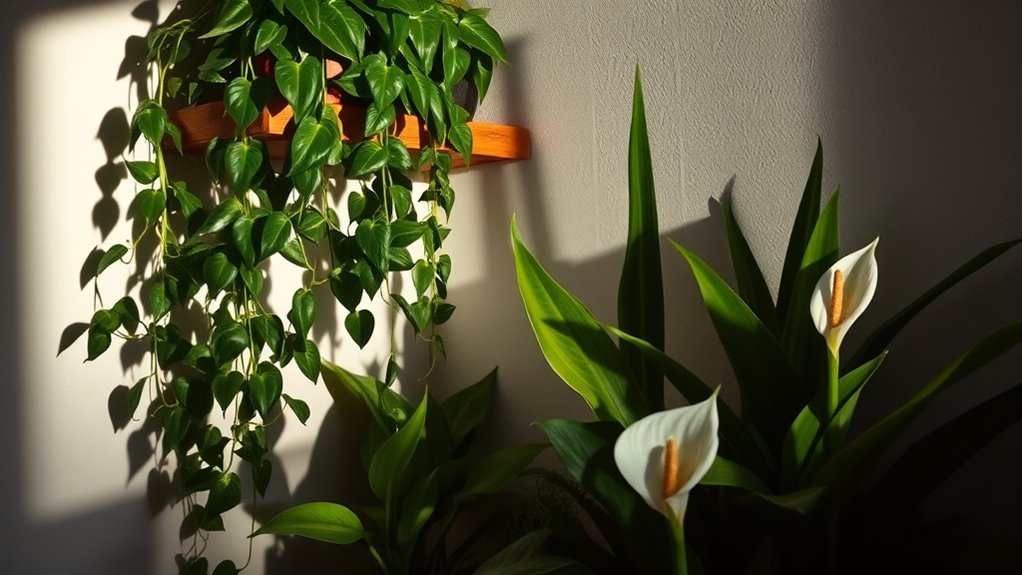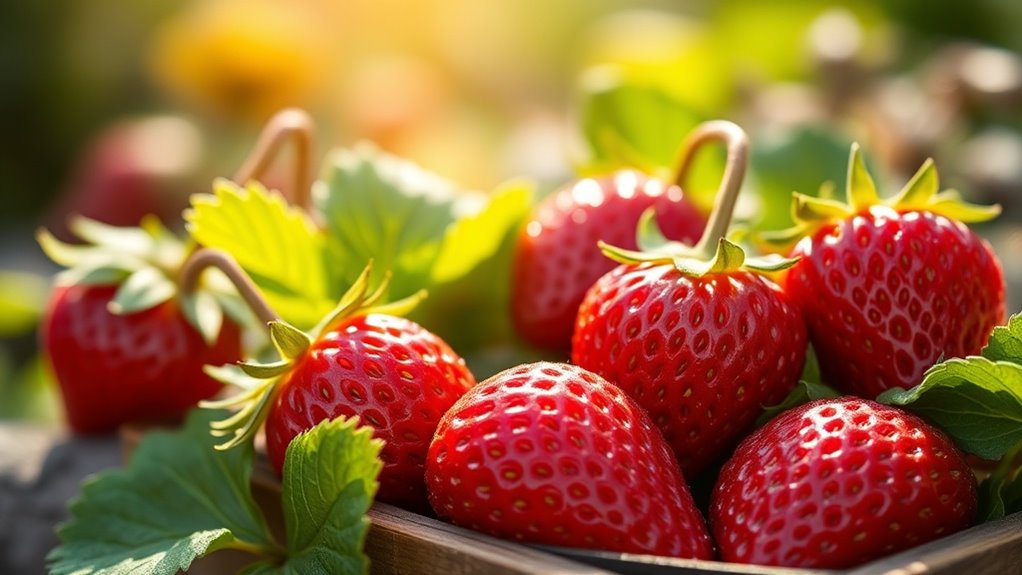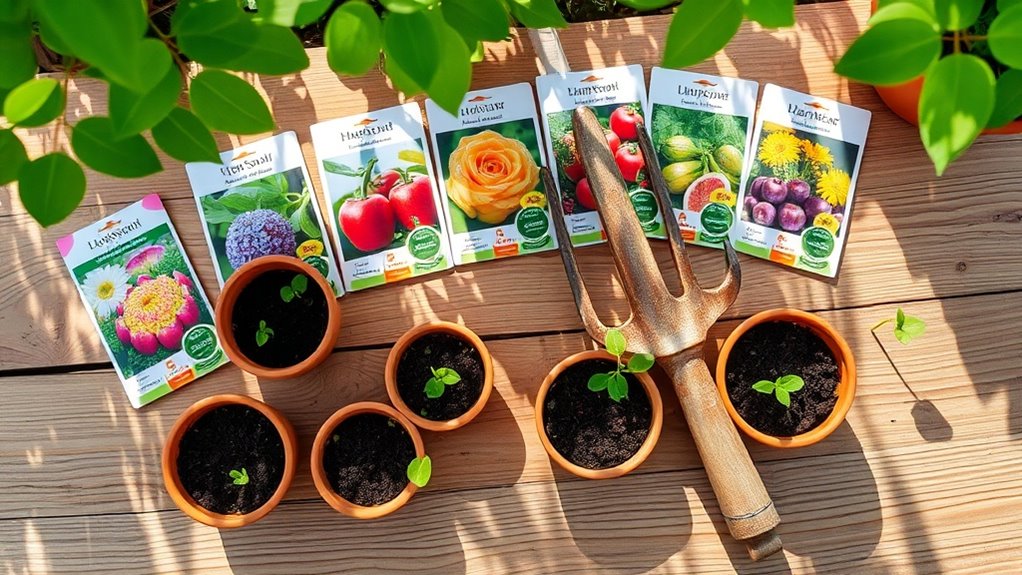7 Easiest Vegetables to Grow for Beginners With Zero Experience
Gardening can feel like a daunting quest, akin to navigating an uncharted territory. However, starting with the right vegetables can transform your experience from overwhelming to enjoyable. You’ll find that some plants are particularly forgiving and suited for novices. By focusing on a select few easy-to-grow options, you can set yourself up for success. Curious about which vegetables will yield the best results without the fuss? Let’s explore your options.
Key Takeaways
- Radishes are fast-growing, require minimal care, and can be harvested in just a few weeks for a quick reward.
- Lettuce thrives in containers, prefers cool conditions, and allows for continuous harvesting of outer leaves.
- Spinach is easy to grow in well-drained soil, providing nutrient-rich leaves packed with vitamins and minerals.
- Green beans are productive and versatile, with a quick harvest timeline of 50-60 days after planting.
- Carrots need little maintenance, can be directly sown into the ground, and are ready for harvest in 2-3 months.
Radishes
Radishes are a fantastic choice for beginner gardeners due to their quick growth and minimal care requirements. These easy vegetables to grow sprout within 3 to 4 weeks, allowing you to enjoy fresh produce in no time. Start by selecting a sunny spot in your garden and prepare the soil by loosening it to a depth of about 12 inches. Sow seeds directly into the ground, spacing them about an inch apart, and cover lightly with soil. Water them regularly, keeping the soil moist but not soggy. Harvest when they reach about an inch in diameter for the best flavor. Additionally, radishes thrive in fast-growing vegetables that can be planted during multiple seasons, making them a versatile choice for any garden.
Lettuce
Lettuce is one of the most rewarding vegetables to grow for beginners, offering a variety of flavors and textures that can enhance any salad.
Start by selecting a sunny spot in your garden or using containers with good drainage.
Sow seeds directly into the soil, planting them about a quarter-inch deep, spaced a few inches apart.
Keep the soil consistently moist, as lettuce prefers cool, damp conditions.
Thin seedlings to allow for proper air circulation, and consider harvesting outer leaves first to promote continued growth.
With just a bit of care, you’ll enjoy fresh, crisp lettuce in no time. Additionally, growing lettuce can be done successfully in a salad garden on your balcony, making it an ideal choice for urban gardeners.
Spinach
Spinach isn’t only packed with essential nutrients, but it also thrives in cooler temperatures, making it an ideal choice for beginner gardeners.
To ensure optimal growth, you’ll need to provide well-drained soil and consistent moisture.
Once your spinach reaches maturity, you can easily harvest the leaves by cutting them just above the base, promoting further growth. Additionally, spinach is known for being one of the easiest vegetables to cultivate, which further boosts its appeal for novice gardeners.
Nutritional Benefits of Spinach
Packed with essential vitamins and minerals, spinach is a powerhouse of nutrition that can greatly enhance your diet.
This leafy green offers a range of benefits that you shouldn’t overlook.
- Rich in Iron: Spinach contains non-heme iron, crucial for energy production and oxygen transport.
- High in Vitamins A and C: These vitamins support immune function and skin health.
- Loaded with Antioxidants: Spinach includes flavonoids and carotenoids that protect your cells from damage.
Ideal Growing Conditions
To maximize the nutritional benefits of spinach, understanding its ideal growing conditions is key. Spinach thrives in cool weather, ideally between 50°F and 70°F.
Choose a well-draining soil rich in organic matter, with a pH of 6.0 to 7.0. Ensure it receives full sun to partial shade; too much heat can cause bolting.
Water consistently, keeping the soil moist but not soggy. Fertilize lightly with a balanced fertilizer to promote healthy growth. Space seeds or seedlings about 12 inches apart to allow for airflow.
Simple Harvesting Techniques
Harvesting spinach is a straightforward process that can yield fresh, nutritious leaves for your kitchen.
To ensure the best flavor and texture, follow these simple steps:
- Choose the right time: Harvest in the morning when leaves are crisp and moisture levels are high.
- Use sharp scissors or shears: Snip the outer leaves about an inch above the base, allowing inner leaves to grow.
- Avoid pulling: Pulling can disturb the roots and damage the plant; cutting promotes healthy regrowth.
Carrots
Carrots are a rewarding choice for novice gardeners, as they thrive in a variety of conditions and require minimal maintenance.
Start by selecting a well-drained, sandy soil with a pH of 6.0 to 6.8.
Sow seeds directly into the ground, spacing them about 2 inches apart, and cover them lightly with soil.
Keep the area consistently moist but not waterlogged.
Thin seedlings to ensure proper spacing as they grow.
Carrots need full sun, so choose a location with at least 6 hours of sunlight daily.
Harvest when they reach your desired size, typically 2-3 months after planting.
Consider using containers for growing if you lack traditional garden space, as they can provide an excellent environment for carrot growth.
Enjoy your fresh carrots!
Green Beans
Green beans are an excellent choice for beginner gardeners, offering a quick and productive harvest. They thrive in full sun and can be grown in various soil types.
To get started, follow these simple steps:
- Plant seeds 1 inch deep, 2-4 inches apart, after the last frost date.
- Water regularly, ensuring the soil is consistently moist but not waterlogged.
- Support climbing varieties with stakes or trellises to maximize space and yield.
In about 50-60 days, you’ll enjoy crunchy, fresh beans. Plus, they’re versatile in the kitchen, making your gardening efforts truly rewarding! Additionally, green beans are known for being easy to grow, which is ideal for busy gardeners.
Zucchini
If you’re eager to expand your vegetable garden beyond green beans, zucchini is a fantastic option for beginners.
Start by choosing a sunny spot, as zucchini thrives in full sunlight. Plant seeds directly in well-draining soil after the last frost, spacing them about 2 feet apart.
Water regularly, ensuring the soil remains moist but not soggy. Fertilize every few weeks with a balanced fertilizer to promote healthy growth.
Watch for pests like squash bugs and remove them promptly. Easy vegetables like zucchini are great for kids to grow, fostering a love for gardening and healthy eating.
Harvest zucchini when it’s about 6-8 inches long for the best flavor. Enjoy your bountiful harvest in various dishes or grilled!
Tomatoes
Tomatoes are a staple in many gardens, and they’re surprisingly simple to grow for beginners.
To ensure a bountiful harvest, follow these essential tips:
- Choose the right variety: Opt for determinate types for smaller spaces or indeterminate for sprawling growth.
- Plant in full sun: Ensure your tomatoes receive at least 6-8 hours of sunlight daily for optimal growth.
- Water consistently: Keep the soil evenly moist, but avoid waterlogging.
Additionally, enriching your soil with nutrient-rich compost can significantly enhance the flavor of your tomatoes.
With a little attention to these details, you’ll soon enjoy the satisfaction of homegrown tomatoes in your salads or sauces!
Happy gardening!

